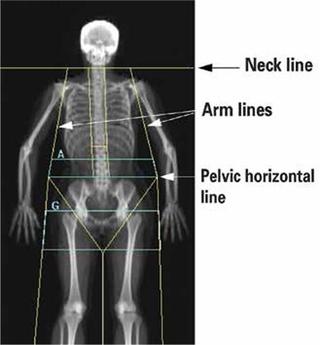PLOS ONE ( IF 2.9 ) Pub Date : 2020-03-30 , DOI: 10.1371/journal.pone.0230707 Linda Aurpibul 1 , Sirianong Namwongprom 2 , Tavitiya Sudjaritruk 1, 3, 4 , Sakaewan Ounjaijean 1

|
People living with HIV who are on antiretroviral treatment are at increased risk of developing premature cardiovascular disease. Children with perinatal HIV infection (PHIV) have survived through their adolescence and are entering adulthood. We determined the prevalence of metabolic syndrome, abnormal biochemical markers, and characterized body composition parameters in youth living with perinatal HIV infection. This cross-sectional study was conducted at the Research Institute for Health Sciences, Chiang Mai University, Chiang Mai, Thailand from December 2017 to February 2018. PHIV-youths between 15 <25 years of age who were receiving ART were enrolled. Data collection included ART-related history, blood pressure, and anthropometric measurements. Body composition including android, gynoid fat mass, and total body fat were measured by dual-energy X-ray absorptiometry. Fasting blood was drawn to test for lipid profile, glucose, and high sensitivity c-reactive protein (hsCRP). One hundred and twenty PHIV-youths (48% female) were enrolled. Their mean age and the median duration on ART were 20.3 (SD2.6) and 14.1 (IQR 10.4–14.9) years, respectively; 76 (63%) were on first-line non-nucleoside reverse transcriptase inhibitors-based regimens. Thirty-three (28%), 74 (62%), and 13 (11%) of PHIV-youths were underweight (BMI < 18.5 kg/m2), normal (BMI 18.5–24.9 kg/m2), and overweight (BMI ≥ 25.0 kg/m2), respectively. The prevalence of metabolic syndrome was 10.6% (95%CI 5.0–16.0). Seventy-six of 113 (67.3%) of PHIV-youths had lipid alteration; the most prevalent types being low HDL (46.9%) and increased triglycerides (27.4%). Overall 43 (35.9%) had increased hsCRP (16.7% with immediate and 19.2% with high risk for CVD). Females had significantly higher percentage of android and gynoid fat, but lower Android to gynoid ratio (AGR) compared to males. There were 77%, 31%, and 21% of PHIV-youths in the overweight, normal weight, and underweight group with AGR in tertile 3, respectively. In conclusion, we documented presence of metabolic syndrome in 10.6% of PHIV-youths on ART. Increase AGR representing abdominal obesity was detected even in youths with normal BMI or underweight.
中文翻译:

抗逆转录病毒治疗的围生期HIV感染青年患者的代谢综合征,生化指标和身体成分。
接受抗逆转录病毒治疗的HIV感染者罹患早发性心血管疾病的风险增加。围产期HIV感染(PHIV)的儿童在青春期后得以幸存,并进入成年期。我们确定了围生期艾滋病毒感染青年的代谢综合征,异常生化标志物和特征化的身体组成参数的患病率。这项横断面研究于2017年12月至2018年2月在泰国清迈大学健康科学研究所进行。纳入了接受抗逆转录病毒治疗的15岁至25岁之间的PHIV青少年。数据收集包括与ART相关的病史,血压和人体测量数据。身体成分包括android系统,妇科脂肪,双能X射线吸收法测定人体脂肪和总脂肪。空腹抽血以测试脂质分布,葡萄糖和高敏感性c反应蛋白(hsCRP)。招募了120名PHIV青少年(女性占48%)。他们的平均年龄和中位抗病毒治疗的持续时间分别为20.3(SD2.6)和14.1(IQR 10.4–14.9)年。76(63%)位是基于一线非核苷类逆转录酶抑制剂的治疗方案。体重不足的PHIV青少年有33(28%),74(62%)和13(11%)体重不足(BMI <18.5 kg / m 76(63%)位是基于一线非核苷类逆转录酶抑制剂的治疗方案。体重不足的PHIV青少年有33(28%),74(62%)和13(11%)体重不足(BMI <18.5 kg / m 76(63%)位是基于一线非核苷类逆转录酶抑制剂的治疗方案。体重不足的PHIV青少年有33(28%),74(62%)和13(11%)体重不足(BMI <18.5 kg / m2),正常(BMI 18.5–24.9 kg / m 2)和超重(BMI≥25.0 kg / m 2), 分别。代谢综合征的患病率为10.6%(95%CI 5.0-16.0)。113名PHIV青年中有76名(67.3%)患有脂质改变;最普遍的类型是低HDL(46.9%)和甘油三酸酯增加(27.4%)。总体上有43人(占35.9%)的hsCRP升高(即刻即刻为16.7%,CVD高危者为19.2%)。与男性相比,女性的android和gynoid脂肪比例明显更高,但Android与gynoid的比例(AGR)较低。在超重,正常体重和体重不足的人群中,分别有77%,31%和21%的PHIV青年与AGR分别位于三分位数3中。总之,我们记录了ART上10.6%的PHIV青年中存在代谢综合征。即使在BMI正常或体重不足的年轻人中,也可以检测到代表腹部肥胖的AGR升高。









































 京公网安备 11010802027423号
京公网安备 11010802027423号